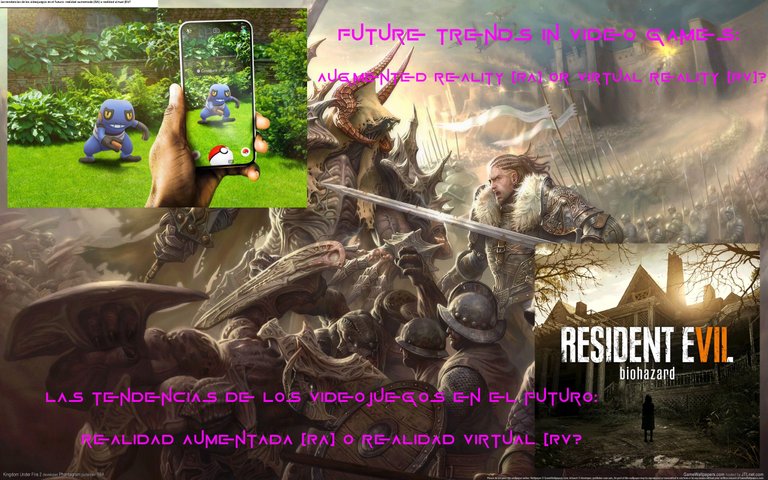
Augmented reality (AR) is a new experience widely used in video games that allows a user to visualize part of the real world through a technological device superimposing virtual objects on it, for example in everyday life we can from a smartphone, tablet, screens or AR glasses capture with the camera a panoramic view of a part or the entire street and superimpose it on the digital street map.
In this way, the tangible, real, physical elements that we have captured are combined with the virtual elements, thus creating an augmented reality in real time and a unique experience to live in first person that will allow us to leave the real world behind and enter a totally digital environment.
In recent years, augmented reality has become increasingly important and is not limited to the recreational aspect of games alone, but its extreme versatility allows it to identify, locate, obtain, store, organise and analyse digital information, assessing its purpose and relevance and effectively intervening in sectors as diverse as education, television, entertainment and advertising, gastronomy, tourism, medicine, literature, cinema, architecture and construction and information in general.
Virtual reality (VR), on the other hand, according to the generalised definition that we can find, is an environment of simulated scenes and objects that appear real through computer technology, i.e. there are no real elements. The perception of reality in this case can be intensified through various stimuli such as special devices, gloves, costumes, glasses and especially the so-called virtual reality helmet.
Various surveys and studies in the video game industry have shown that both "realities" will be one of the new trends in the video game market in the near future.
The question is: which of the two will prevail? Or will it be a combination of both?
This experience, which has vast applications in other sectors (imagine, for example, being able to attend a concert where a now defunct artist is performing, to cite just one example that may be of interest to #hivers friends who are passionate about art and music), has already been applied in the past and in a limited way with the famous slot machines that we have seen in so many films and in those huge halls in Las Vegas with dozens of these machines available to players.
The integration of the AR system in the gaming industry.

The traditional and famous Pokemon Go game of 2016 (it would seem a distant date considering the evolution of videogames but it has barely been five years) is an approximate form of augmented reality as a single device (a mobile phone) is enough for the user to use geo-location and participate in a game collecting the pets, and travelling through all kinds of real scenarios to achieve their objective.
In recent times, the boom experienced by the e-sports gaming industry has led to the integration of different models of AR systems.
Virtual reality with the application of state-of-the-art technologies has seen industry giants such as Sony, Valve, Oculus and Microsoft actively participate in its development and application, not to mention new brands such as NetEnt, Micrograming, Playtech and iBetSoft taking all the credit in online gaming.
Virtual reality and 3D casinos like SlotsMillion allow you to play using Oculus Rift goggles or in 3D with 360º vision directly from your PC screen allowing the user to interact as if they were inside it.
The take-off of virtual reality.

Virtual reality has been hinting at taking off in the videogames market for several decades and has never had the strength to do so, perhaps this year is the definitive year for its take-off.
Ironically AR which has started to develop much later has found a superior commercial reception perhaps because the user feels that the sense of "reality" that never leaves the player is closer in AR than in VR. Some users have argued that AR is less "artificial" than VR and therefore closer to one's everyday life.
What is certain, surveys and opinions aside, is that today, it seems that finally in this new year, a consumer market with products of sufficient quality to match all that has been promised since the dawn of the 1990s when this new technology appeared on the tech and computer market is beginning to develop in a definitive way.
Already titles as Star Citizen, No Man's Sky, Nintendo Labo Robot, Resident Evil 7 and others allow integration from consoles and PCs with VR devices. Perhaps one of the biggest problems at the moment is the high price of accessories, which means that many users continue to play on a traditional screen.
0 commenti:
Post a Comment